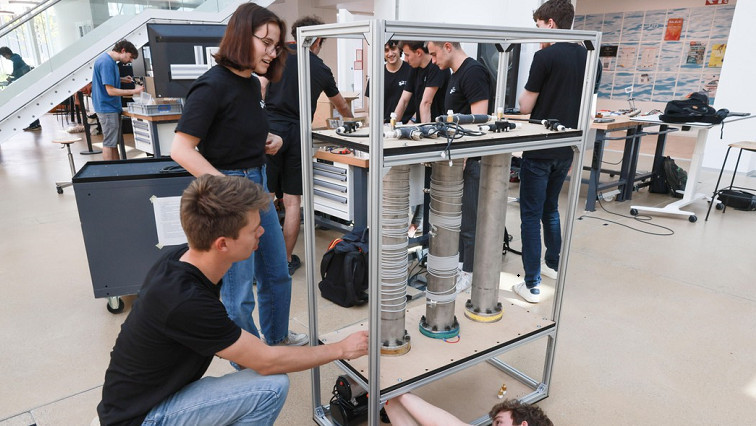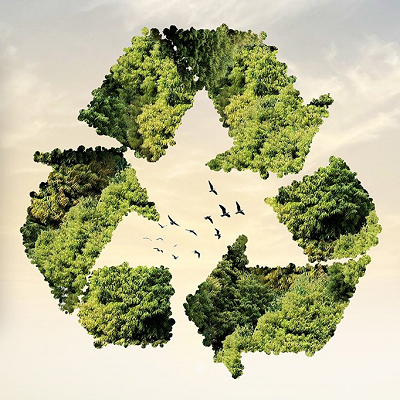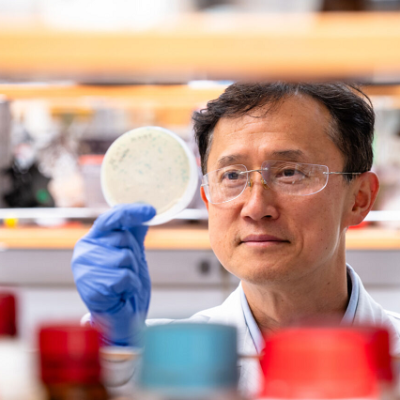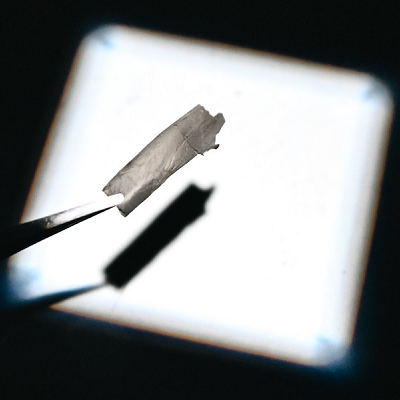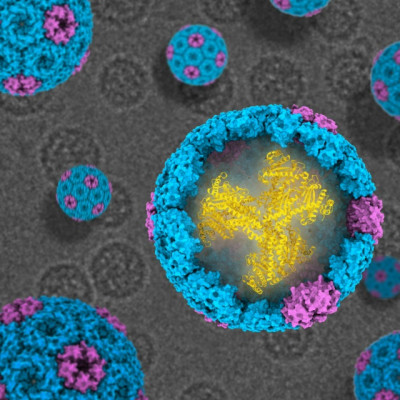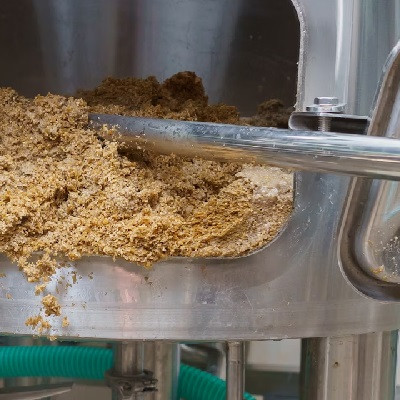“The competition really spurred us on,” says Karl Khalil, the founder and leader of the EPFL Carbon Team. “We took part in the February 2022 call for proposals just as we were getting the project off the ground. Our technology finished in the top 60, although we didn’t make it into the final 15. But as a student team that had only just been formed, we chalked it up as a big success.”
The EPFL Carbon Team was created as part of the School’s MAKE program. The 30-or-so students, representing all schools, have an ambitious goal: to build a machine that can remove CO2 from the air and then to install their machine on an EPFL campus. The race to design carbon-capture technology is attracting huge interest, as evidenced by the more than 1,000 entrants who took part in XPRIZE Carbon Removal. But the EPFL student team is breaking new ground by combining two pioneering technologies developed at the School’s Valais Wallis campus.
All the benefits without the drawbacks
The team’s approach aims to harness all the benefits of the two technologies while avoiding their drawbacks. The first technology uses an adsorbent powder developed at the Laboratory for Functional Inorganic Materials (LFIM), headed by Prof. Wendy Queen. The substance acts like a sponge, pulling CO2 from the air as it passes through it. The powder is then heated to release the trapped carbon.
The second technology was developed by Prof. Kumar Agrawal, who holds the Gaznat Chair for Advanced Separations and is the team’s scientific advisor. His lab designs porous atom-thick graphene membranes that act like sieves, allowing only CO2 to pass through from the mixture of CO2 and N2. “Our technology is based on relative molecular size,” he explains. “Using a chemical process, we puncture tiny, CO2 -sized holes in the graphene film. CO2 can pass though these holes but not N2 which is a bigger molecule.”
The benefit of Prof. Queen’s technology is its ability to capture CO2 even at low concentrations. However, because the powder has to be heated to release CO2, the process is energy-intensive. The heat also damages the adsorbent powder, which has to be replaced at regular intervals. Conversely, Prof. Agrawal’s technology uses very little energy but works efficiently only at relatively high CO2 concentrations. In broad terms, the student team’s concept involves preparing “CO2-enriched” air using only a moderately powerful adsorbent powder, and then passing this air through the membranes, which work more efficiently at higher concentrations. “By combining these two approaches, we can significantly reduce the cost of carbon capture,” says Prof. Queen.
“It’s really exciting to work with groups of students who are so motivated to make a positive impact on the world,” continues Prof. Queen. “They approach technology in a way that’s unbiased, whereas my own thinking could well be colored by my own experience. Their approach opens up new possibilities for testing materials and for research in general.” Prof. Agrawal adds: “MAKE projects are about training the next generation of environmentally conscious scientists, managers and leaders. The students get to roll up their sleeves, learn about technology-related challenges and develop a prototype through a process of trial and error.”
Producing carbonated water
Prof. Agrawal is delighted with the progress the team has made these past two years. The students have already demonstrated the proof-of-concept for their design, and the results of the large-scale simulations are promising. They’ve also built a prototype that now needs to be tested. Scale was one of the main challenges the team faced. “In the lab, we work at the centimeter scale,” says Prof. Agrawal. “We had to build membranes out to the meter-scale, then scale them up to 10 times that size, in order to make them suitable for real-world applications.” To begin with, the prototype will be capable of trapping only tiny quantities of CO2. “But our goal is to capture one or two kilos of CO2 per day,” says Khalil. “By the end of this year, we’re aiming to produce carbonated water on campus.”
Isn’t filtering carbon from the air on the EPFL campus a bit like trying to drain the ocean with a teaspoon? “Yes... but not really,” says Khalil. “Our aim is to develop a technology that works. There’s no need to test it on an industrial chimney stack. If we can prove our system works here on campus, then we could install it somewhere else. We’re also thinking long-term: if the world is to meet its climate targets, we don’t need to just capture the CO2 we’re emitting today. We also have to remove all the carbon released into the atmosphere since the dawn of the industrial age.”
Read the original article on École Polytechnique Fédérale de Lausanne (EPFL).

